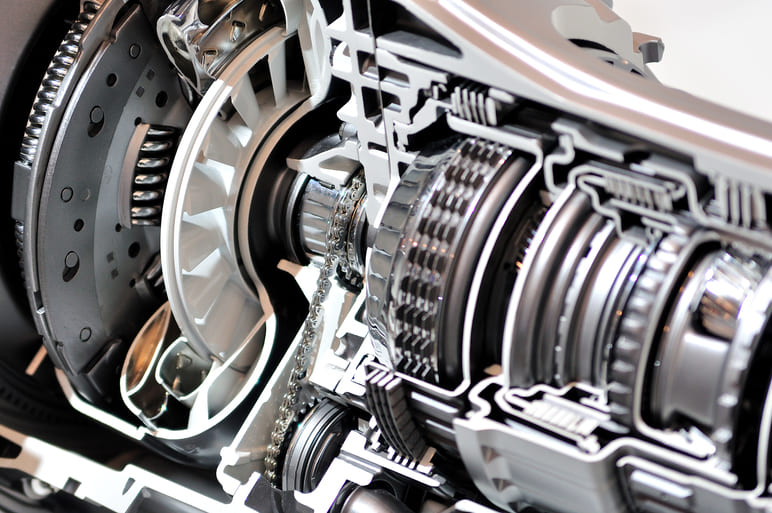The clutch is not just a part of your car, it is the key to its proper functioning and your safety on the road. Without it, you cannot start, change gears, or stop.
In this article, we will analyze the pros and cons of the clutch, from its design and types to signs of malfunction and proper replacement.
Objective:
- Help beginner drivers understand how the clutch works.
- Update the knowledge of experienced drivers.
- Provide practical advice on diagnosing and replacing the clutch.
A mechanical clutch operates through physical interaction between the clutch pedal and the mechanism itself via a cable. It is the simplest and most reliable system, requiring regular cable adjustments to maintain optimal performance.
- The simplest and most common type.
- Controlled by a mechanical actuator, usually a cable or a hydraulic cylinder.
- Low-cost maintenance.
- Requires some skill to smoothly engage gears.
A hydraulic clutch uses hydraulic fluid to transmit the force from the pedal to the clutch mechanism. This system provides smoother engagement without the need for regular adjustments, but requires attention to the condition of the hydraulic fluid and the tightness of the system.
- Uses a hydraulic actuator to control the release bearing.
- Provides easier and smoother clutch disengagement.
- Maintenance is more expensive than a mechanical clutch.
An automatic clutch is electronically controlled and does not require the driver’s intervention to change gears, providing a high level of driving comfort. However, the maintenance of these systems is more complex and expensive.
- Does not require manual operation.
- Uses a torque converter or an electric transmission to automatically engage and disengage the engine and transmission.
- Provides maximum comfort, but is less economical and
- Its repair is more expensive.
A dual-mass clutch is an evolution of the mechanical and hydraulic clutch, incorporating two drive discs to improve gear shift smoothness and reduce vibration. These clutches are ideal for powerful and high-performance vehicles.
- Used in high-power vehicles to reduce the vibrations transmitted from the engine to the transmission.
- Consists of two inertia flywheels connected by a damping device.
- Maintenance is more complex and more expensive than that of a conventional clutch.
Clutch statistics for residents in Portugal
| Characteristic | Value |
| Average clutch lifespan | 100,000 – 150,000 km |
| Clutch replacement cost | 400 – 1000 euros |
| Most common causes of clutch failure | – Wear of friction pads – Locking of the disengagement bearing – Leakage of fluid in the hydraulic actuation |
Determining clutch failure
Clutch failure can manifest through various symptoms: difficulty or inability to shift gears, a squeaking or noise when the pedal is pressed, a “drop” in the clutch pedal, and the feeling that the vehicle is not pulling with the usual force. These signs may indicate wear of the clutch disc, a faulty master or slave cylinder in the hydraulic system, or other issues.
Symptoms of clutch malfunction:
- Slippage when the accelerator pedal is pressed, the car does not accelerate and the engine speed increases.
- The clutch does not disengage completely, making gear shifting difficult.
- Noise When the clutch is disengaged, a noise, a squeak or a vibration can be heard.
- Difficulty in disengaging The clutch pedal is tight or slips.
Clutch kit replacement
Replacing the clutch is not an easy task and usually requires the intervention of a specialist, learn more about how to replace the clutch kit. The process involves disassembling the gearbox to access the clutch, replacing worn components (clutch disc, pressure plate, release bearing), and then reassembling the system. It is important to use quality spare parts and strictly follow the vehicle manufacturer’s instructions to ensure reliable and long-lasting operation of the new clutch.
Recommendations:
- At the first signs of clutch malfunction, contact an automotive assistance service.
- It is recommended to replace the clutch as a set, including basket, disc, and release bearing.
- When replacing the clutch, it is important to properly adjust the transmission.
The clutch is not the most complex part of the car, but its role in its operation cannot be overestimated.
Remember: timely maintenance, careful operation, and knowledge of the basic principles of clutch operation will help you prolong its lifespan and keep you safe on the roads.
Useful advice:
- Regularly check the fluid level in the clutch hydraulic actuator.
- Do not tow or overload the vehicle.
- Avoid sudden movements and gear changes.
- If you notice the first signs of clutch malfunction, contact an automotive assistance service.
I hope this article has been helpful to you!












